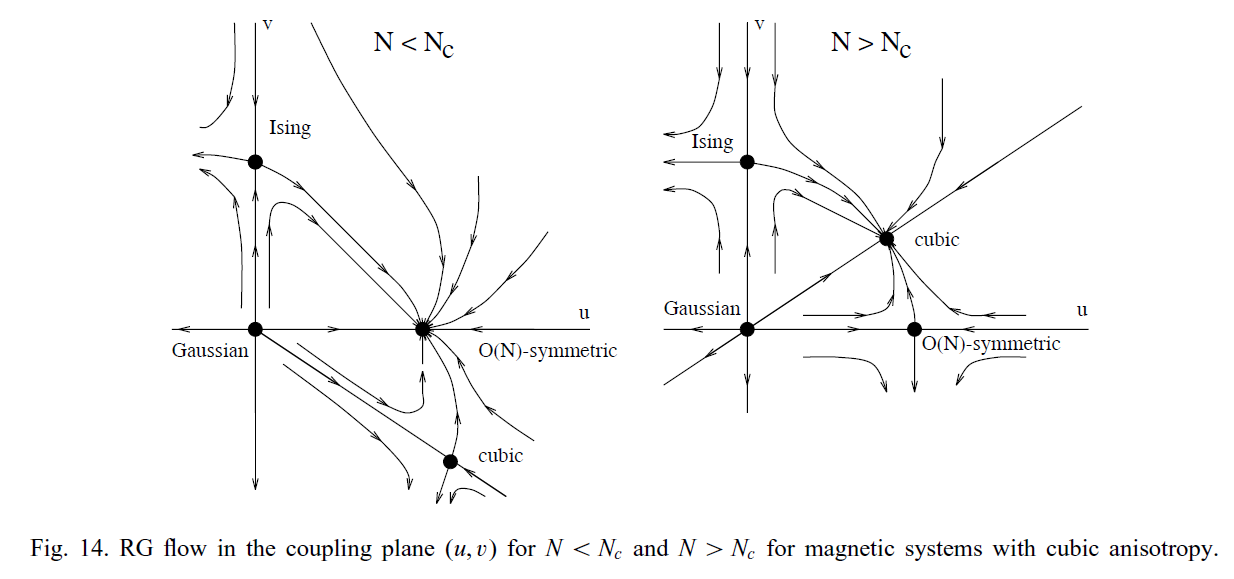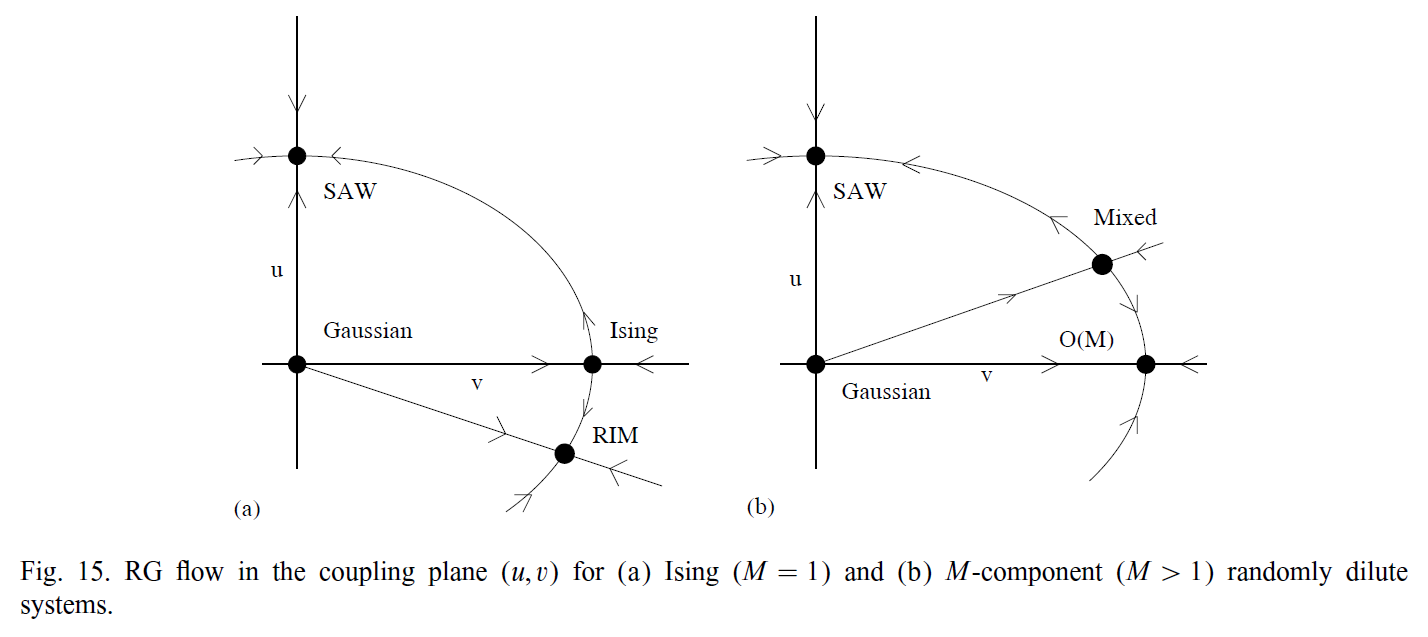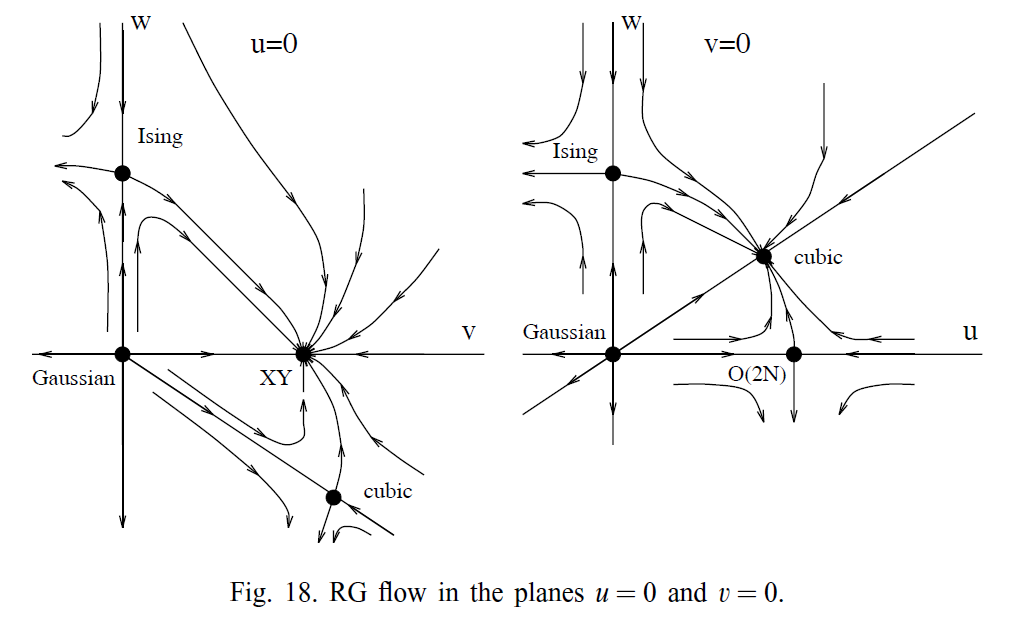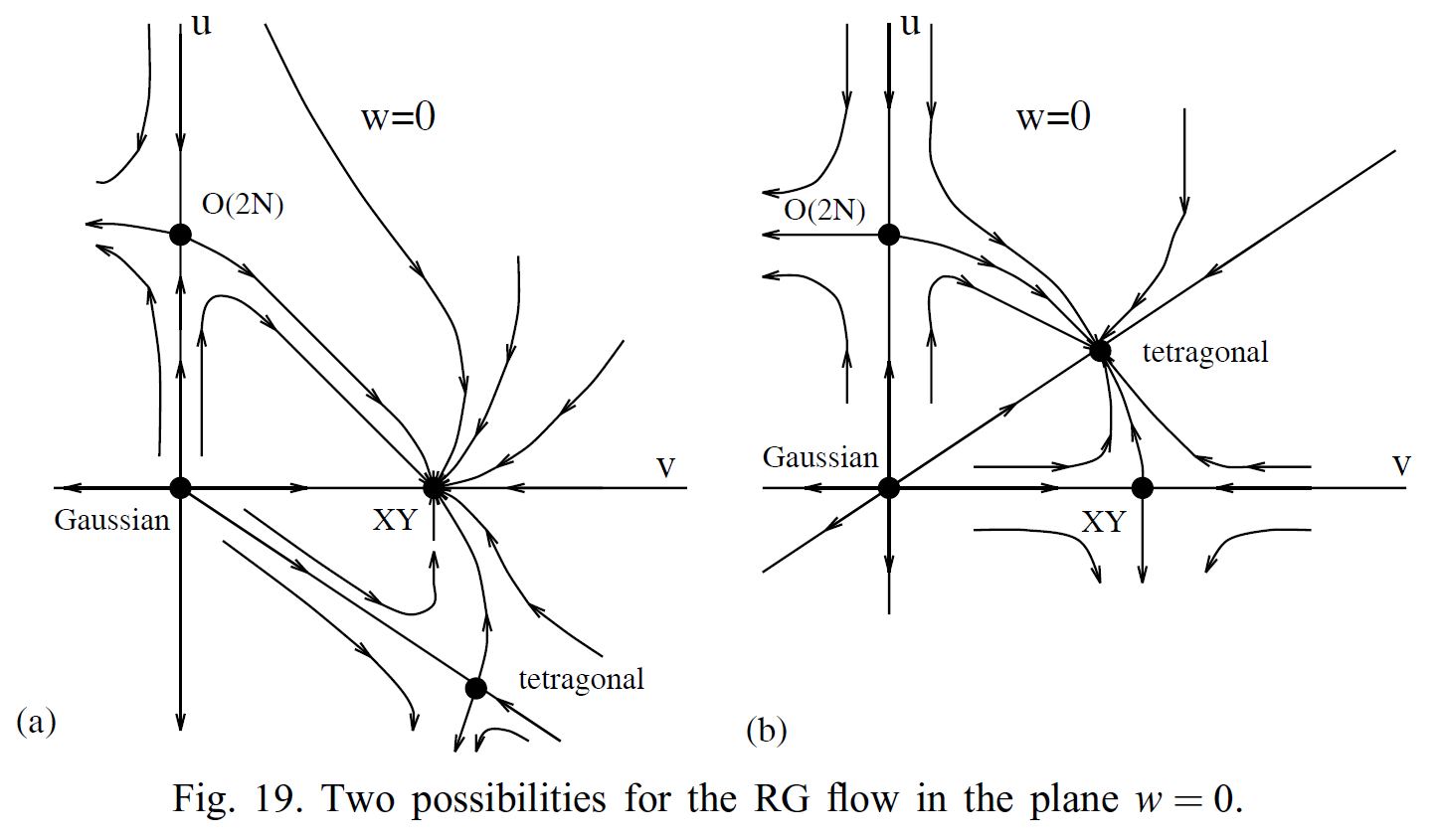普适类 | 典型Hamiltonian | relevant models | special properties | critical exponents | equation of state | amplitude ratios | two-point correlation function\(G(x)=\langle\vec{\phi}_{x}\cdot\vec{\phi}_{0}\rangle-\langle\vec{\phi}_{0}\rangle^{2}\) | true correlation length(inverse mass gap)\(\xi_{\mathrm{gap}}=-\limsup _{|x| \rightarrow \infty} \frac{|x|}{\log G(x)}\) | second-moment correlation length\(\xi=\left[\frac{1}{2 d} \frac{\sum_{x}|x|^{2} G(x)}{\sum_{x} G(x)}\right]^{1/2}\) | physical systems |
| Gaussian class | | (1) (2) | | | | | high T: Ornstein-Zernike behavior \(G(q)\approx \frac{\chi}{1+q^{2}\xi^{2}}\) low T: | | | (1) (2) |
| 3D Ising class | \(H=-J\sum_{\langle ij\rangle}s_{i}s_{j}-H\sum_{i}s_{i}, s_{i}=\pm 1\) | (1)Klauder model(bcc); (2)double-Gaussian model(bcc); (3)\(\phi^{4}\)-\(\phi^{6}\) model; (4)improved Blume-Capel model | | | | | \textbf{high T}: \(\tilde{G}(q)\approx\frac{\chi}{g^{+}(y)}\), \(y=q^{2}\xi^{2}\)For \(y\to 0\), \(g^{+}(y)=1+y+\sum_{n=2} c_{n}^{+} y^{n}\); For \(y\to \infty\), Fisher-Langer law-\(g^{+}(y)^{-1} \approx \frac{A_{1}^{+}}{y^{1-\eta / 2}}\left(1+\frac{A_{2}^{+}}{y^{(1-\alpha) /(2\nu)}}+\frac{A_{3}^{+}}{y^{1 /(2\nu)}}\right)\)\(G(x) \approx \frac{Z_{\text {gap }}}{2\left(\xi_{\text {gap }}\right)^{d-2}}\left(\frac{2 \pi|x|}{\xi_{\text {gap }}}\right)^{-(d-1) / 2} \mathrm{e}^{-|x| / \xi_{\text {gap }}}\)\textbf{low T}: 同high T | | | (1)Liquid-vapor transitions (2)Binary mixtures (3)Coulombic systems (4)Micellar systems (5)Uniaxial magnetic systems |
| 2D Ising class | \(H=-J\sum_{\langle ij\rangle}s_{i}s_{j}-H\sum_{i}s_{i}, s_{i}=\pm 1\) | | | | | | 同上 | | | (1)Liquid-vapor transitions (2)Binary mixtures (3)Coulombic systems (4)Micellar systems (5)Uniaxial magnetic systems |
| 3D XY class | (2-component, U(1) symmetry) | (1)liquid \({}^{4}\)He(superfluid transition)(2)BEC | | \(\gamma=1.31, \nu=0.67, \eta=0.038\) | | | 形式同上, 数值不同 | | | (1)superfluid transition of \(^{4}\)He(\(\lambda\)-line) (2) |
| 2D XY class | (2-component, O(2) symmetry) | solid-to-solid(SOS) models | BKT critical behavior | | | | \(T=T_{c}\): \(G(r)_{\text{crit}}\sim \frac{(\ln r)^{(2\theta)}}{r^{\eta}}\left[1+O\left(\frac{\ln \ln r}{\ln r}\right)\right]\) | | \(\xi\sim \exp\left[\frac{b}{t^{\sigma}}\right]\), \(t\equiv\frac{T-T_{c}}{T_{c}}\), \(\sigma=1/2\) | KT transition: (1)thin films of superfluid helium; (2)easy-plane magnetic materials; |
| 3D Heisenberg class | (2-component, O(3) symmetry) | | | | | | high T: low T: | | | (1)Curie transition in isotropic ferromagnets (2)antiferromagnets at the Neel transition point |
| 3D O(\(N\)) class | (\(N\)-component, O(\(N\)) symmetry) | \(N=4\), O(4) - QCD \(N=5\), O(5) - O(3)\(\oplus\)U(1)=O(3)\(\oplus\)O(2), high-\(T_{c}\) superconductors large-N | | | | | high T: low T: | | | (1)isotropic magnets (2) |
| 2D O(\(N\)) class | (\(N\)-component, O(\(N\)) symmetry) | \(N<2\), power-law behavior \(N=2\), BKT transition \(N\leq 3\), no finite-T phase transition | | | | | high T: low T: | | | (1)isotropic magnets (2) |





